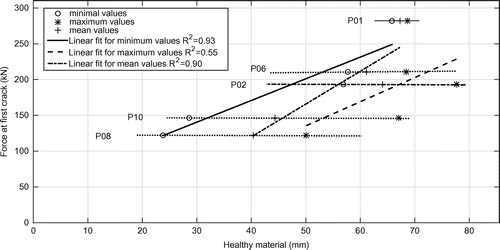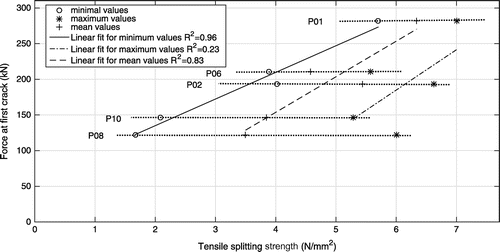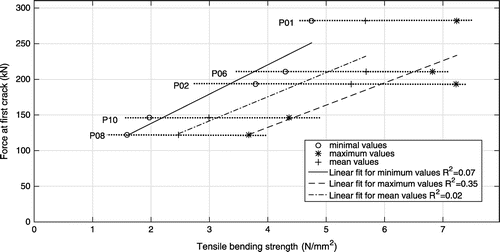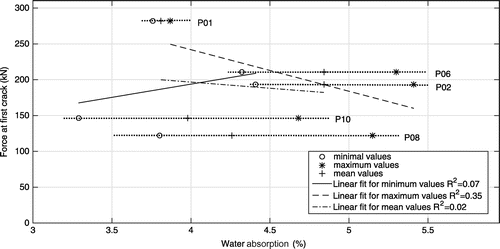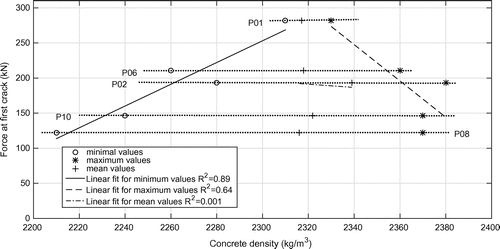Figures & data
Table 1. Characteristics of studied sewer pipes.
Figure 1. Schematic diagram of the adopted experiment principle (left) and actual experimental set-up (right).

Figure 3. Successive stages in the test of a sewer pipe (P02) from Municipality of The Hague during the experiment.
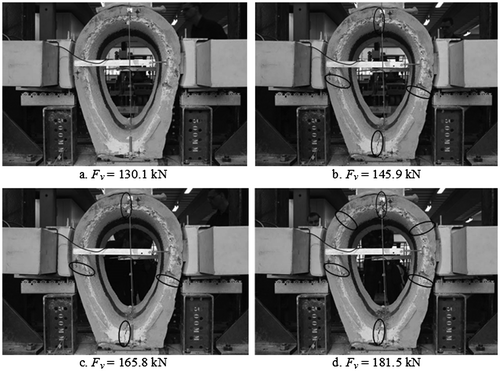
Figure 4. Force-displacement response for; (a,b) the 61-year-old sewer pipes - P02, P06; (c,d) the 89-year-old sewer pipes - P08, P10; (e) the new sewer pipe - P01. Legend: Fv – vertical force; Fh – horizontal force; δfv – front vertical displacement; δfh – front horizontal displacement; δbv – back vertical displacement; δbh – back horizontal displacement.
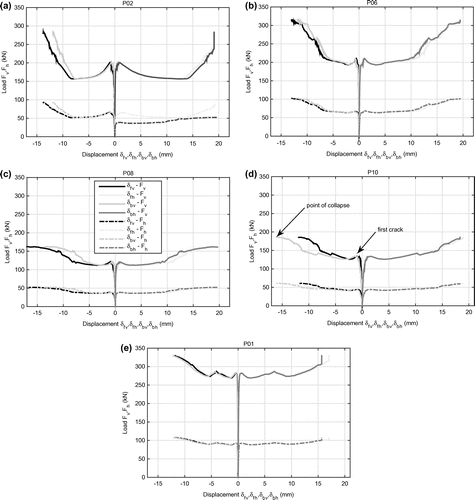
Figure 5. Boxplot for the carbonation depths at the inside for pipes P02, P06, P08 and P10; discriminating between crown, lateral and invert positions. On each box, the central mark is the median, the edges of the box are the 25th and 75th percentiles, the whiskers extend to the most extreme data points not considered outliers (approximately ± 2.7σ), and outliers are plotted individually.
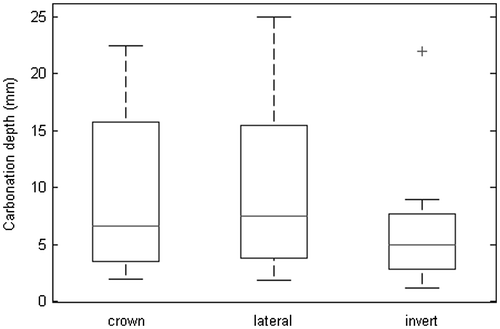
Figure 6. Boxplot for the carbonation depths at the outside for pipes P02, P06, P08 and P10; discriminating between crown, lateral and invert regions. On each box, the central mark is the median, the edges of the box are the 25th and 75th percentiles, the whiskers extend to the most extreme data points not considered outliers (approximately ± 2.7σ), and outliers are plotted individually.
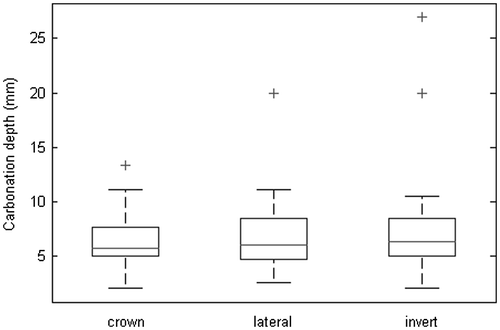
Figure 7. The four-pint flexural test force-deformation response for; (a) the new sewer pipe – P01; (b) the 60-year-old sewer pipe – P02; (c) the 90-year-old sewer pipe – P08.
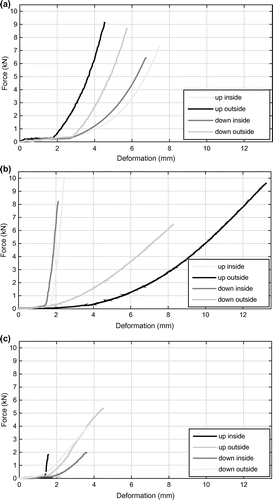
Figure 9. Examples of the studied thin sections under the polarised light with the highlighted ettringite (P06 and P02).
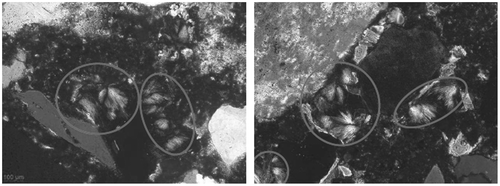
Figure 10. Relation between force at the first crack and carbonation depth at the inner wall of the pipes.
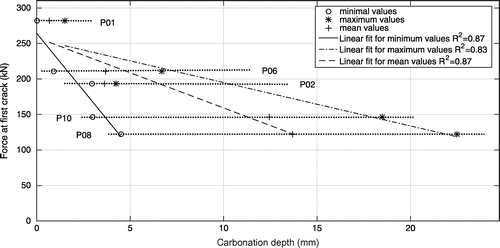
Figure 11. Relation between force at the first crack and the carbonation depth at the inside and outside wall of the pipes.
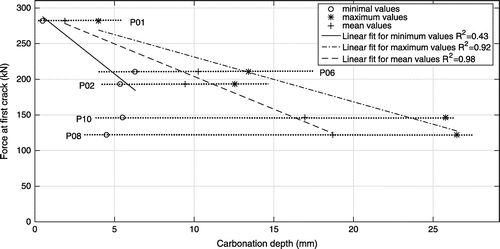
Figure 17. Relation between thickness of the remaining healthy material and force at the first crack.
